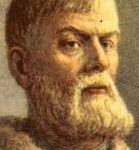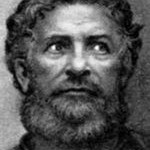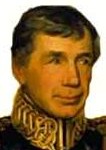Brief notes about Russian explorers of the sea
Category: Famous peopleSea voyages in the South
A number of sea voyages were made by the ancestors of the Eastern Slavs as far back as the 6th and 7th centuries of our era.
In 626 the Scythians reached Constantinople by sailing along the western coast of the Black Sea.
Russian seamanship in those early days was not confined to the Black Sea. Russian seamen were also on the Island of Crete in 902 and again in 949, and in Italy in 936.
The Russians carried on extensive trade with the Arabs and the Persians as early as the 7th and 8th centuries. These trade relations stimulated navigation on the Caspian Sea.
Discoveries in the North
Russian chronicles of the 12th to te 15th centuries tell about the courageous people of Novgorod who sailed to the White Sea and settled down on the coast and on the Kolsky Peninsula. They discovered the islands of Novaya Zemlya, Kolguev, Medvezhy and Spitsbergen.
In 1466 the merchants of Tver decided to go to the countries of the Khvolinsk Sea, as the Caspian Sea was then called. Afanasi Nikitin, an experienced traveller, was appointed the head of the expedition. From the very first day he started writing a diary.
The ship with A. Nikitin and other Russian merchants on board arrived safely at Derbent. From there Nikitin went on to Baku and farther on to Persia.
In the spring of 1469 he reached Ormuz, an important trading port on an island in the Persian Gulf. From Ormuz Nikitin sailed to the city of Bidar in India.
Afanasi Nikitin reached India thirty years earlier than Vasco da Gama. He visited places where no Europeans had ever been seen before.
After three years in India he left for his native land. On his way home he visited the eastern coast of Africa, port Muscat in Arabia, Ormuz, Trebizond, a Turkish town on the northern coast of the Black Sea, Balaklava and Kafa, as Feodosia was then called.
Nikitin’s diary gives the best description known in those days of India, Persia, of various caravan and sea routes, of the trade, economics, cities, customs and religions of the countries he visited.
 Expeditions of S.Dezhnev and V.Bering
Expeditions of S.Dezhnev and V.Bering
The strait between Asia and America was first discovered in 1648 by an expedition headed by Semyon Dezhnev. In the 18th century the strait was named after Bering, who entered it while he was at the head of the great Northern Expedition. It was only in 1758 that Dezhnev’s reports were discovered in the Yakutsk archives and were finally published.
250 years after the expedition made by Dezhnev and his men, the extreme north-east point of Asia was named the Cape of Dezhnev.
 Russian seamen were the first Europeans to set foot on a small island (now called Kayak) off the shore of the Alaska Peninsula. This was in July 1741, during Captain Bering’s expedition to explore North America.
Russian seamen were the first Europeans to set foot on a small island (now called Kayak) off the shore of the Alaska Peninsula. This was in July 1741, during Captain Bering’s expedition to explore North America.
Vitus Bering and Aleksei Chirikov opened the way to the Pacific Ocean for Russian seamen. They discovered the chain of Aleutian Islands and founded the first Russian settlement in Alaska.
The first voyage of Russian seamen round the world was organized in 1803 by Lt.-Captain Ivan Fyodoyrovich Krusenstern and Yuri Fyodorovich Lisyanski, a learned and experienced navigator.
The expedition, which lasted three years, had great significance for Russia. Important scientific data was obtained and a regular sea route between Kronstadt and Russian America was established.
* * *
The second voyage of Russian seamen round the world was made on a ship under the command of Lt. Vasili Mikhailovich Golovnin. It started on August 6, 1807 and ended at the beginning of October 1809.
The main aim of the cruise was to explore parts of the Pacific Ocean knowledge of which was as yet scant.
The Discovery of Antarctica
On January 29, 1821, the crews two Russian ships, the Vostok and Antarctica the Mirny, saw the coast of Antarctica for the first time in history.
This expedition was led by Faddei Faddeyevich Bellinsgausen and Mikhail Petrovich Lazarev. It discovered the Antarctic continent, 29 islands and one coral reef.
Expeditions Headed by F.P.Litke
The Island of Novaya Zemlya was mapped and described by a Russian expedition headed by Fyodor Petrovich Litke in 1822-1823.
In 1826—1829 another Russian expedition headed by Litke made a voyage round the world for scientific purposes.
The members of the expidition explored, mapped and described the already known Caroline Islands, and many new islands discovered by them in the tropical zone of the Pacific Ocean. A group of inhabited islands discovered in the eastern part of the Caroline Islands was named the Senyavin Islands.
Exploring of the Far East
On August 3, 1849, one of the most interesting geographical problems of those days—whether Sakhalin was an island or a peninsula— was solved by Admiral Gennadi Ivanovich Nevelskoy.
Together with his companions, Nevelskoy explored and mapped the banks of the Amur and the coasts of the Tatar Strait and described the Island of Sakhalin.
Expeditions of the Russian Geographical Society
Much was done by Russian expeditions in the charting of the Caspian Sea. The first map of the Caspian Sea was made in 1715 by the expedition headed by A. Belkovich-Cherkassky. Another map, which was also very important, was drawn in 1719—1720 by two Russian hydrographers K. Verden and F. I. Soimonov. In 1726 Fyodor Soimonov walked round the great lake and described it in detail.
In 1850 the Russian Geographical Society sent an expedition headed by P. P. Semyonov-Tien-Shansky (1827—1914), an outstanding geographer and botanist, to explore Lake Issyk Kul.
The expedition reached the heart of the Heavenly Mountains and explored more than twenty mountain passes. Semyonov-Tien-Shansky brought back to St. Petersburg rich collections of mountain rocks, plants and animals.
During the period of 1870—1885 the Russian Geographical Society organized four expeditions to Central Asia. The expeditions were led by N. M. Przhevalsky (1839—1888), the great Russian explorer.
The length of Przhevalsky’s routes across Central Asia was almost equal to the length of the Earth’s circumference and the area charted was equal to the area of Australia.
Przhevalsky was the first to give a detailed description of the great Gobi and other deserts of Central Asia, lie made a collection of 15,000 plants among which 218 plants had been unknown to science.
N. M. Przhevalsky became one of the greatest explorers of the 19th century.


